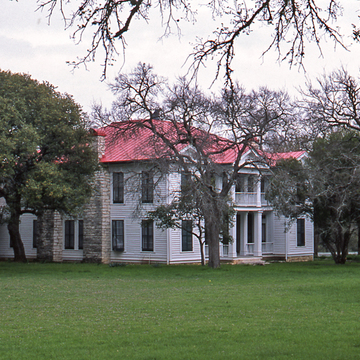The plantation is among the most outstanding in the state for the completeness of its assem blage of outbuildings and residence, and is one of the best-preserved plantation-era complexes in Texas. The symmetrical, five-bay, hipped-roof house has projecting pediments on the first, third, and fifth bays (forming an E plan). The central bay has a double-galleried portico supported on square Doric columns and integrated with the double-gallery porch of the second through fourth bays. Stylistically, the house may be associated with the Georgian style with its grand size and formal composition. The detached stone kitchen was joined to the house in the 1880s. Also on the site are the single-story, gable-roofed stone servants' quarters, a stone and wood barn, and the family cemetery where Robertson is buried.
Colonel Elijah Sterling Clack Robertson was a Texas pioneer, patriot, and one of the founders of Salado College and the town of Salado. The plantation is not open to the public and is owned and operated as a working ranch by Robertson's descendants. It is partially visible from the S. Stagecoach access road.











